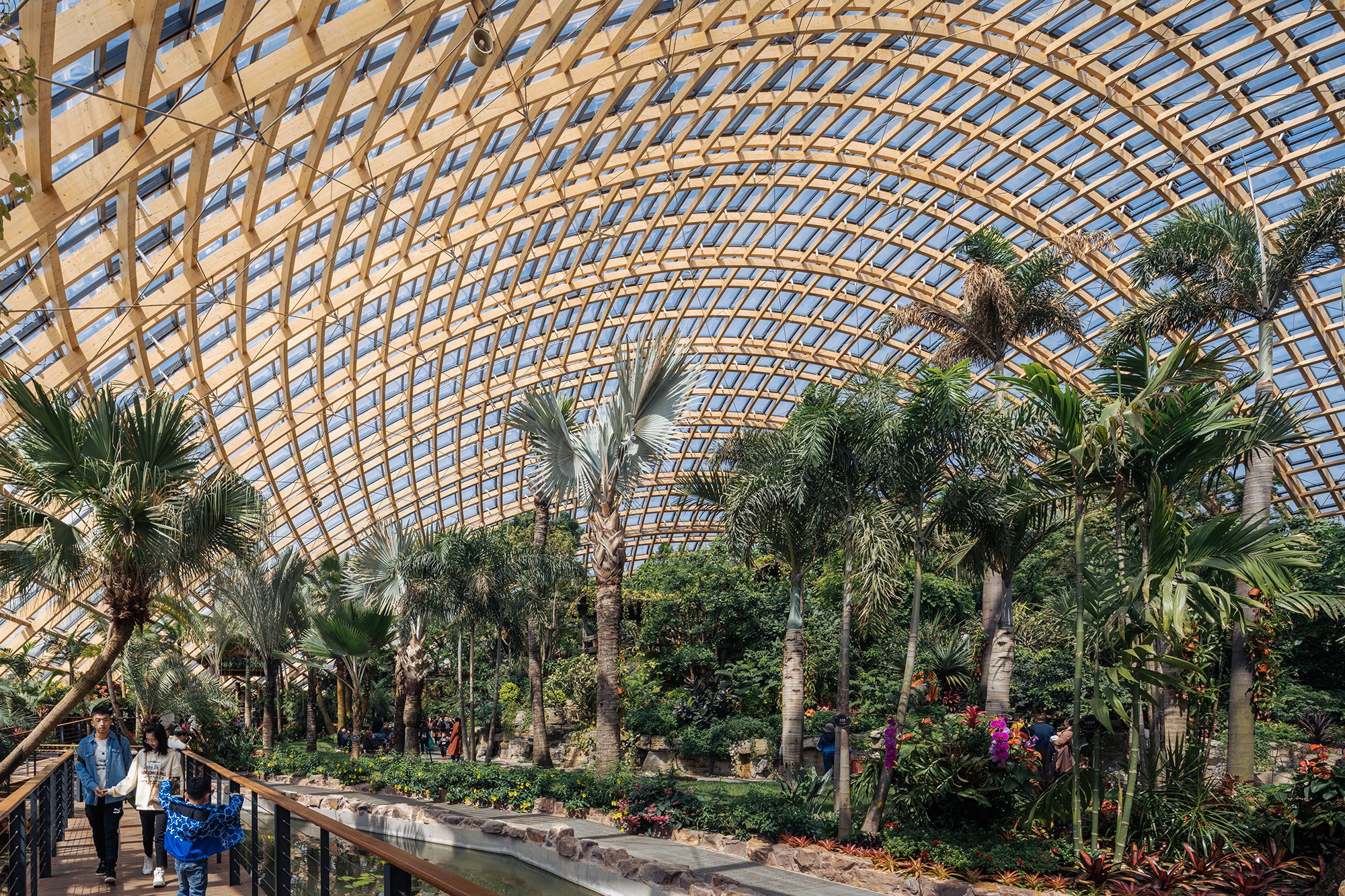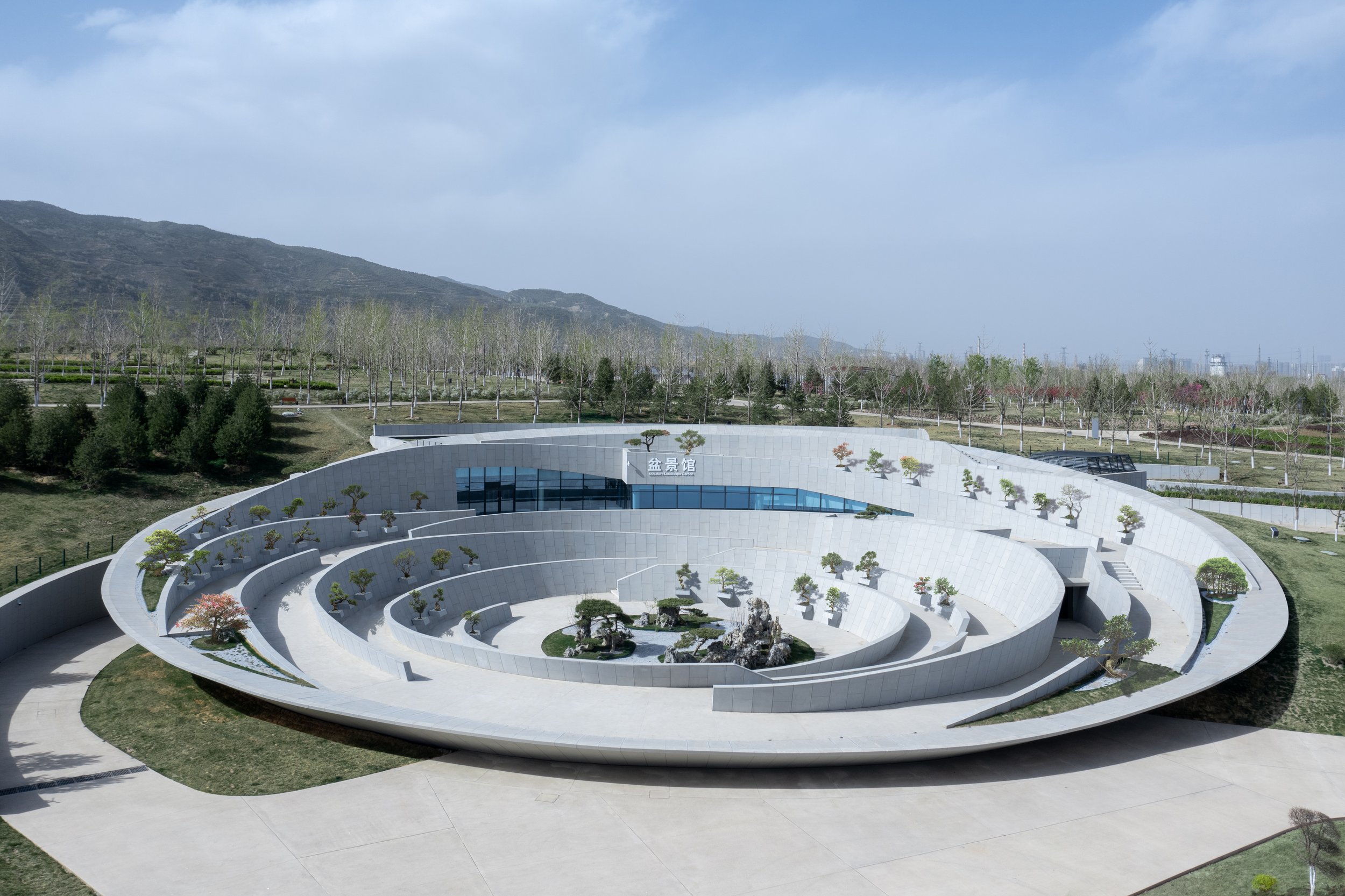Architecture: Taiyuan Botanical Garden
Bird’s Eye View of Taiyuan Botanical Garden © CreatAR
Located in Taiyuan, the largest city in China’s North East Shanxi province, the Taiyuan Botanical Garden is a hidden gem for not only botany enthusiasts but for lovers of architecture as well. Designed by the Austrian architecture firm Delugan Meissl Associated Architects, the Taiyuan Botanical Garden was completed in 2021. With few botanical gardens that can rival the design and architecture of these structures, the Taiyuan Botanical Garden sets itself apart as completely unique and as a world-class location to celebrate the diversity of plant life from around the world.
Taiyuan Botanical Garden Interior © CreatAR
With the objective of transforming a plot of land previously used for coal-mining, the most prominent feature of the Taiyuan Botanical Garden is the central greenhouse complex. Consisting of three hemispherical greenhouses constructed with a timber lattice structure, the greenhouses face south to allow maximum sun exposure through their glazed, double-curved glass panels, some of which can be opened to allow in fresh air. The largest of the three greenhouse hemispheres—which houses a tropical environment of plantlife—is currently one of the largest timber lattice structures in the world. The second largest greenhouse is the home to a desert environment of plants and the smallest greenhouse, which sits within the lake, houses aquatic plant life. The three greenhouses are connected through an extensive system of walkways which curve around a central lake and connect visitors to the additional buildings that make up the botanical gardens.
Park Entrance and Nature Museum © CreatAR
Aside from the greenhouses, the botanical garden has an architecturally significant entrance way to the park which stretches through the top of a nature museum and administration facility. Once through the entrance, visitors are provided with top of the line panoramic views of the architecture of the greenhouses, park and accompanying structures. The botanical gardens also boast a teahouse and restaurant for visitors to relax in as well as a Bonsai museum that houses a research facility. Embedded into the surrounding hills and landscape the Bonsai museum can be reached through concentric circles of stairs and ramps that lead visitors into the museum.
Bonzai Museum © CreatAR
In a world where industry is exponentially taking over spaces of nature and where spaces of leisure are often thought of as auxiliary to business, the Taiyuan Botanical Garden provides a counterpoint to this trend. Taking up a space formerly used for coal mining, the park now provides a service that not only has the ability to counteract the detrimental outcomes of coal burning but provides citizens of and visitors of Taiyuan with a top of the line space to revel in leisure. But it isn’t just a space for leisure, the garden also has the ability to provide local jobs through the museum, research facility, and garden maintenance. It is buildings like these that provide a blueprint not only for what leisure spaces can be but also how they can contribute to local economies in substantive ways.











